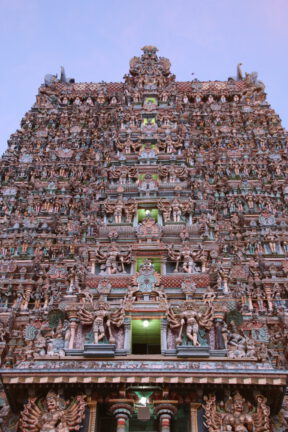SChopenhauer, who was a great admirer of the Upanishads, wrote a small book "On the fourfold root of the law of sufficient reason" (1847). He identifies 4 forms of causality, e.g. small cause - large effect, or large cause - small effect etc... I was fascinated by this because it offers a broader understanding than the purely scientific model, which ultimately always follows the law of conservation of energy. For example, if someone declares war, it is a relatively simple act (small cause) and a huge effect. I wonder how this relates to historical science. Here, too, there is the idea of causal relationships. In historiography, things always happen for a reason. But this reason is often disproportionate to the effect.
Narrative
So if we turn away from the rigid model of simple causality, then history is no longer a rational, causally necessary and unambiguous sequence of linked events, but a network of different elements in a stimulus-response scheme. Deleuze introduced the concept of the rhizome, which fits here. Everything is somehow connected to everything else via various and countless nodes. The sack of rice that falls over in China and causes a butterfly effect is a vivid example.
However, in the postmodern and post-structuralist analyses of historical events, we see attempts not to reduce events causally, but to examine them in terms of their network of relationships. Possible narratives emerge, one of which is just as valid as another as long as it sticks to the facts. It is said that all people are known to each other to the seventh degree. This is statistics, but it shows the complexity. Someone inspired another to write something, which was read by a third person and then recited to a fourth, who then responded and triggered an action in a fifth, which is considered a historical event. This can be very arbitrary and quickly contradict the linear narratives of history books. However, it does not have to be wrong.
Such an understanding of the world, in which everything is connected to everything else and a monocausal explanation is impossible, is not merely a criticism of rationalism and the rigor of science. It is ultimately an acknowledgement of a connection that transcends human comprehension. It is actually spiritual, because it recognizes a complex force. In the Upanishads, this power is sung about as the Self. For postmodern thinkers, this is more of an immanence, or a tolerant materialism, which is ultimately not reduced to atomism, but is rather to be thought of as the opposite of dualism. Everything is matter, i.e. everything is a form of being - i.e. there is only one self. The circle is complete.
The reason for being
The basic evil was the excessive exaggeration of intellect and reason and the ignorance of intuition. In the first Upanishads, mystical and rational thinking are not yet separated. Here we find an intuitive vision of the self, a recognition of forces that are not irrational, but not purely rational either. It is a holistic way of thinking that postmodernism has intuitively revived in its somewhat eccentric materialist, Marxist and psychoanalytical interpretation.








